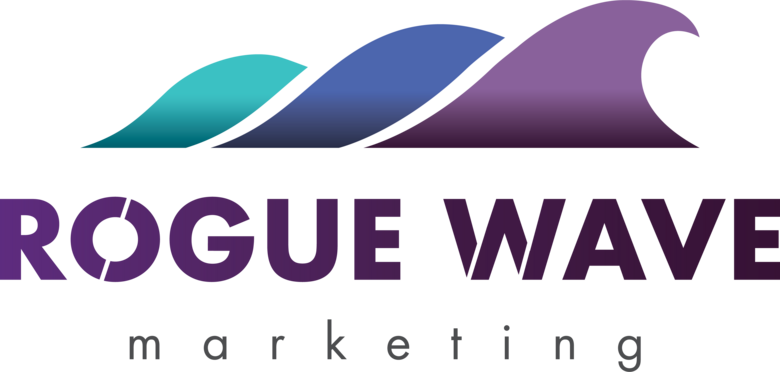
Have you opened up Twitter yet today and seen the new black “X” logo?
As a digital marketing company, we are closely following Elon Musk’s surprising decision to rebrand Twitter as “X.” This bold move has raised many eyebrows and sparked heated discussions among branding experts, marketing professionals, and social media enthusiasts. In this comprehensive analysis, we delve into the reasons behind Musk’s risky strategy, the potential implications for Twitter’s brand value, and the intriguing possibilities the new “everything app,” X, may offer.

Elon Musk’s Surprising Move: Farewell to the Iconic Twitter Blue Bird
At the heart of this transformation lies the decision to let go of Twitter’s iconic blue bird logo, which had become synonymous with the platform over the past 15 years. According to Forrester vice president and research director Mike Proulx, this move is an “exceptionally risky” one, as it means starting from scratch to build a new brand, erasing the significant brand value that Twitter had amassed over the years. Prior to Musk’s takeover, Twitter was still a multi-billion-dollar brand, as noted by Robert Haigh, director of brand valuation consultancy Brand Finance. However, Musk’s abrupt decision to rebrand as “X” without a carefully managed migration plan has likely caused a considerable loss in brand value.
Marketing Experts Criticize Musk’s Instant Rebrand
Critics argue that Musk could have learned valuable lessons from Mark Zuckerberg’s methodical introduction of Meta. By contrast, Musk’s rapid abandonment of Twitter without a clear plan has raised concerns about the potential destruction of brand value. Nevertheless, branding and marketing experts opine that this clean break from Twitter’s bird-based brand is a calculated move to pave the way for the “everything app” concept that Musk envisions for X.
While many remain skeptical about the underlying strategy, others argue that Musk’s reputation as one of the most skillful manipulators of social media indicates that there may be more to the Twitter rebrand than meets the eye. Sam Ashken, a senior strategy director at brand consultancy Interbrand, suggests that Musk’s apparent recklessness and outrage on social media might serve a purpose beyond immediate comprehension.

Vicky Bullen, the chief executive of branding and design agency Coley Porter Bell, concurs with this perspective. She points out that Musk’s seemingly odd approach, which appears reckless on the surface, has achieved a remarkable transformation for X virtually overnight. This swift change would typically take months for other brands to accomplish.
Will X Be ‘Just Another Social App’?
The shift to X marks the beginning of Musk’s ambition to create an “everything app” that mirrors China’s WeChat—an app that seamlessly combines various functionalities like ride-hailing, food delivery, payments, investing, and messaging. However, questions remain about the extent of the changes Musk intends to implement for X beyond the new logo. Branding experts note that a logo alone does not constitute a comprehensive rebranding.
To assess the potential success of X, branding and marketing professionals believe that Musk must quickly introduce features that set it apart from Twitter and other competing platforms. These distinct features could potentially leave rivals, like Instagram’s Threads, behind and create a new category for X. However, if X merely replicates Twitter without any radically new features, it could be deemed a branding failure.
The Immediate Financial Impacts
Twitter’s advertising revenue has diminished under Musk’s leadership, partly due to controversies surrounding his stance on free speech and content moderation, as well as changes to the platform’s verification system. The rebranding of Twitter into X hints at the anticipation of new opportunities that could overshadow these losses. According to Graham Staplehurst, global director at research firm Kantar, the “team at X” expects the rebranding to open up opportunities beyond advertising. X’s potential as a superapp presents opportunities for diverse revenue streams, and this could be a welcome change for the company. However, Jane Ostler, Kantar’s executive vice president for global thought leadership, warns that the rebrand might also create uncertainty for advertisers.
As Musk navigates the legal aspects of rebranding, obtaining trademarks for “X” presents a significant challenge. The letter “X” is widely used and cited in hundreds of trademarks, including those owned by Meta and Microsoft. Intellectual property lawyer Matthew Harris suggests that it may be difficult for Musk to secure the necessary trademarks, and even if he does, enforcing them against other brands using the letter “X” might be problematic.
Given Musk’s diverse portfolio of companies, including electric carmaker Tesla, rocket firm SpaceX, brain implant company Neuralink, and tunneling enterprise Boring Company, his net worth is estimated at $242 billion by Forbes. Acquiring Twitter for $44 billion in 2022 further solidified his position as the world’s richest individual. Musk’s ambition to create an “everything app” like X Corp demonstrates his drive to push boundaries and revolutionize the tech industry.
What Do We See?
A lot of excitement, curiosity and simultaneously, skepticism.
Just like all the major changes we’ve seen hit the digital marketing real, from MySpace to Facebook, Instagram to TikTok, and all the others that continually keep emerging, we’ll always be hunting for more ways to connect. The “next big thing” in the digital media arena will have to fulfill more of the different learning styles and add new ways to engage.





